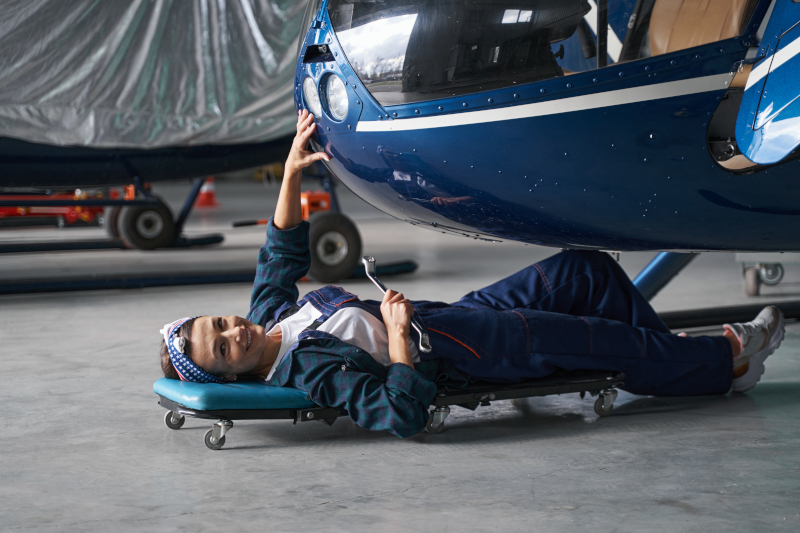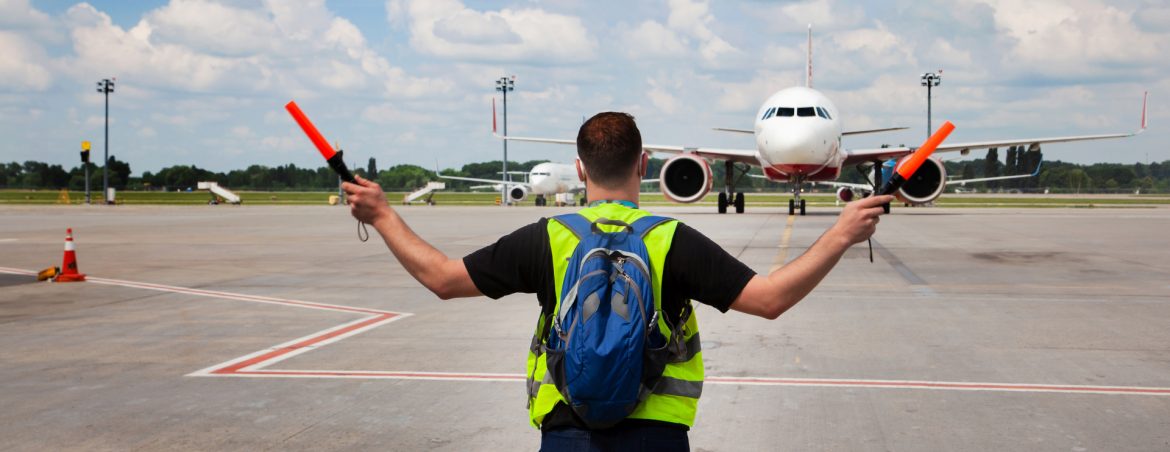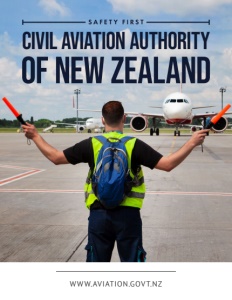Civil Aviation Authority of New Zealand
Safety First
The regulatory and safety voice of the industry ensure clear skies ahead
The skies are busier than ever, making aviation safety a paramount concern. At the forefront of this endeavor in New Zealand is the Civil Aviation Authority (CAA), an organization dedicated to maintaining and enhancing the safety and security of aviation within the country and its extensive airspace. The CAA’s responsibilities are vast, ranging from regulatory oversight to promoting industry best practices, and they are critical to the safe and efficient operation of New Zealand’s aviation sector.
David Harrison, the Deputy Chief Executive at the New Zealand Civil Aviation Authority, delves into the intricacies of his role and the organization he helps lead. With specific responsibility for the Aviation Safety Group, Harrison shares insights into the CAA’s operations, the challenges they face, and the innovations driving the future of aviation safety.
The role of the Civil Aviation Authority
The New Zealand Civil Aviation Authority, a Crown entity, and public service organization is tasked with a comprehensive mandate: to control standards and policies for aviation within New Zealand and its associated airspace. This responsibility extends to one of the largest airspace areas globally, encompassing substantial expanses of the Pacific Ocean. Despite New Zealand’s relatively small landmass, its airspace coverage presents unique challenges that the CAA must navigate.
“We oversee aviation within New Zealand and its associated airspace, which, from a global context, is one of the largest areas for any country,” Harrison explains. The CAA’s jurisdiction includes the skies above New Zealand and stretches far into the Pacific, requiring dynamic regulatory frameworks.
As a government entity, the CAA maintains independence from the political system, ensuring unbiased regulatory oversight while remaining accountable to the Minister through the Ministry of Transport. This structure is designed to balance regulatory independence with political oversight, a model mirrored by other aviation authorities such as the Federal Aviation Administration (FAA) in the United States, the European Union Aviation Safety Agency (EASA), and counterparts in Australia and Canada.
Addressing and mitigating key risks
“The Civil Aviation Act is our top-level legislation, and it sets all the baseline parameters for how aviation operates and how we supervise aviation,” Harrison states.
Beneath the Civil Aviation Act is a suite of civil aviation rules establishing the industry’s operating parameters. “These rules ensure a level playing field, requiring all operators to meet minimum standards to be certified,” Harrison explains. The regulatory framework is necessary for maintaining safety and consistency across the aviation sector.
A significant update to the Civil Aviation Act was made legal in 2023 and will come into practical application in April 2025. The update represents a comprehensive review and revamp of existing legislation, reflecting the CAA’s commitment to evolving alongside industry standards and technological advancements.

Embracing emerging technologies
Aviation has always been at the cutting edge of technological advancement, from the Wright Brothers’ first flight to modern long-haul airliners capable of traveling halfway around the world without stopping. However, the pace of technological change in aviation is accelerating. “Emerging technology is challenging the rate of change. We’re not seeing years and decades now; it’s happening very quickly,” Harrison notes.
The CAA has developed a regulatory approach through its Emerging Technologies Programme to adapt to this rapid change. The initiative is designed to accommodate the swift advancements in aviation technology and the various platforms in development. “We need to be much more reactionary to that, and that is the aim of the Emerging Technologies Programme (ETP),” Harrison says.
The Emerging Technologies Programme (ETP) is a gateway for innovations in the aviation sector, forging a crucial link between the CAA and aerospace stakeholders. It is designed to facilitate the seamless and safe integration of cutting-edge technologies into the civil aviation ecosystem, supporting the government’s environmental and economic objectives.
The Emerging Technologies Unit (ETU) within the ETP provides an effective regulatory interface, ensuring that new and novel technologies are safely and efficiently incorporated into the aviation system. The ETU plays a key role in advancing the industry’s capabilities by fostering the secure adoption of these innovations.
Promoting aviation safety
Safety is the cornerstone of the CAA’s mission, reflected in its numerous initiatives and campaigns. One such initiative is the “Work Together, Stay Apart” campaign, which has been running for over nine months. This project targets unattended aerodromes—airfields without air traffic control—and aims to minimize risks, particularly mid-air collisions.
The “Work Together, Stay Apart” campaign is a comprehensive safety initiative to address airborne conflicts at unattended aerodromes. These aerodromes do not have dedicated air traffic services, making coordination between pilots and operators imperative to prevent accidents. Unattended aerodromes can include small airfields always without air traffic control and larger aerodromes that may have air traffic services only part-time. The campaign aims to increase awareness and understanding of standard operating procedures among pilots and aerodrome operators.
This is achieved through educational activities, such as seminars and workshops conducted across various regions, providing pilots and operators with essential knowledge about operating safely in shared airspace. Additionally, the campaign distributes comprehensive guides, best practice checklists, and safety protocols to all participants operating at unattended aerodromes.
Collaboration and promoting best practices are key components of the campaign. Specialized working groups are established, bringing pilots, aerodrome managers, and industry experts to discuss and address specific safety issues. The groups focus on developing practical solutions and implementing standardized procedures. Continuous collaboration with various stakeholders, including private pilots, commercial operators, and aviation clubs, ensures the promotion and enforcement of best practices.
Airborne conflicts at unattended aerodromes have been a serious issue. Since 2008, there have been three fatal mid-air collisions at such aerodromes: Paraparaumu in 2008, Feilding in 2010, and Masterton in 2019. Furthermore, since 2016, there have been 431 reported near-collision events, with 14 critical incidents occurring in 2022 alone. These statistics highlight the ongoing risk and the necessity for rigorous safety measures.
Harrison explains, “We have a lot of airfields in and around the country that don’t necessarily have air traffic control. They’re what we call unattended airfields.” The campaign seeks to improve knowledge, skills, and procedure adherence through education and engagement, creating a safer environment for all participants operating at and from unattended aerodromes.
Fostering continuous improvement
Harrison emphasizes the importance of continuous improvement and learning. “Using our Emerging Technologies Programme, we’re learning more about how to regulate better,” he says. The shift from prescriptive to performance-based rules offers more flexibility, setting broad safety objectives while allowing operators to develop safe operations tailored to new platforms and scenarios.
The CAA handles over 10,000 incidents annually, using a triage system to prioritize responses based on potential severity. “If it’s an immediate safety concern, we react immediately,” Harrison states. The organization also looks at incident patterns to address broader safety risks proactively.
A key aspect of the CAA’s mandate is the public interest, ensuring the safety of passengers and those on the ground. “Passengers are reasonably expected to get on an airplane and reach their destination safely. That’s one of our prime roles,” Harrison affirms.
The CAA’s dedication to nurturing a culture of continuous improvement plays a vital role in the aviation industry. By consistently seeking advancements, the CAA elevates safety standards and ensures the industry remains agile and responsive to emerging challenges and opportunities. This commitment to proactive innovation fortifies the aviation sector, enabling it to adapt and thrive in a constantly evolving landscape.

Engaging with industry stakeholders
While the CAA’s primary role is regulatory oversight, it also engages regularly with industry representative groups and organizations to ensure that regulatory activities achieve safety outcomes without placing unnecessary burdens on regulated parties. “We engage regularly with industry representatives to understand their needs and ensure that our regulatory activities are effective and efficient,” Harrison says.
The engagement is essential for balancing the CAA’s regulatory responsibilities with the aviation industry’s practical needs. By fostering open communication and collaboration, the CAA helps ensure that its regulations are effective and reasonable.
Future of flight
The CAA’s proactive approach and commitment to regulatory quality will remain central as the aviation industry evolves. By balancing stringent safety standards with the flexibility to adapt to new technologies and challenges, the CAA ensures that New Zealand’s skies remain among the safest in the world.
“We are dedicated to fostering continuous improvement and embracing innovations to secure the future of aviation in New Zealand’s expansive airspace.”
AT A GLANCE
Civil Aviation Authority of New Zealand
What: A public service organization for the Civil Aviation Authority (CAA) and Aviation Security Service (Avsec) of New Zealand that provides information on aircraft registration, airworthiness, licensing, certification, passenger information, rules, safety, and regulations related to aviation in New Zealand.
Where: New Zealand
Website: https://www.aviation.govt.nz/




 This information will never be shared to third parties
This information will never be shared to third parties